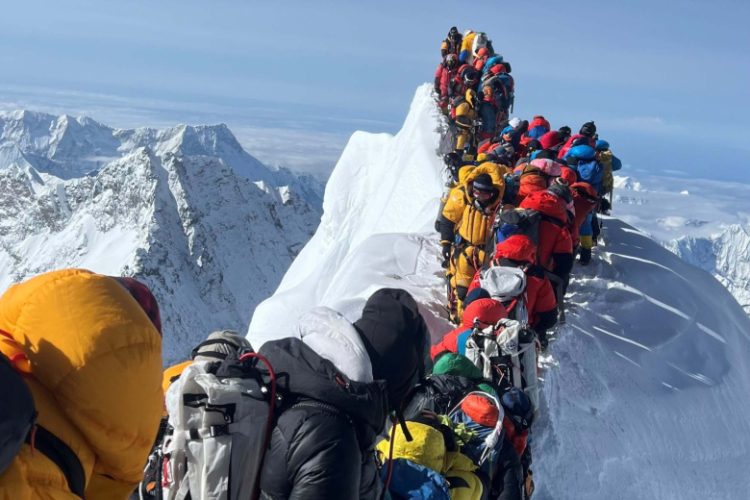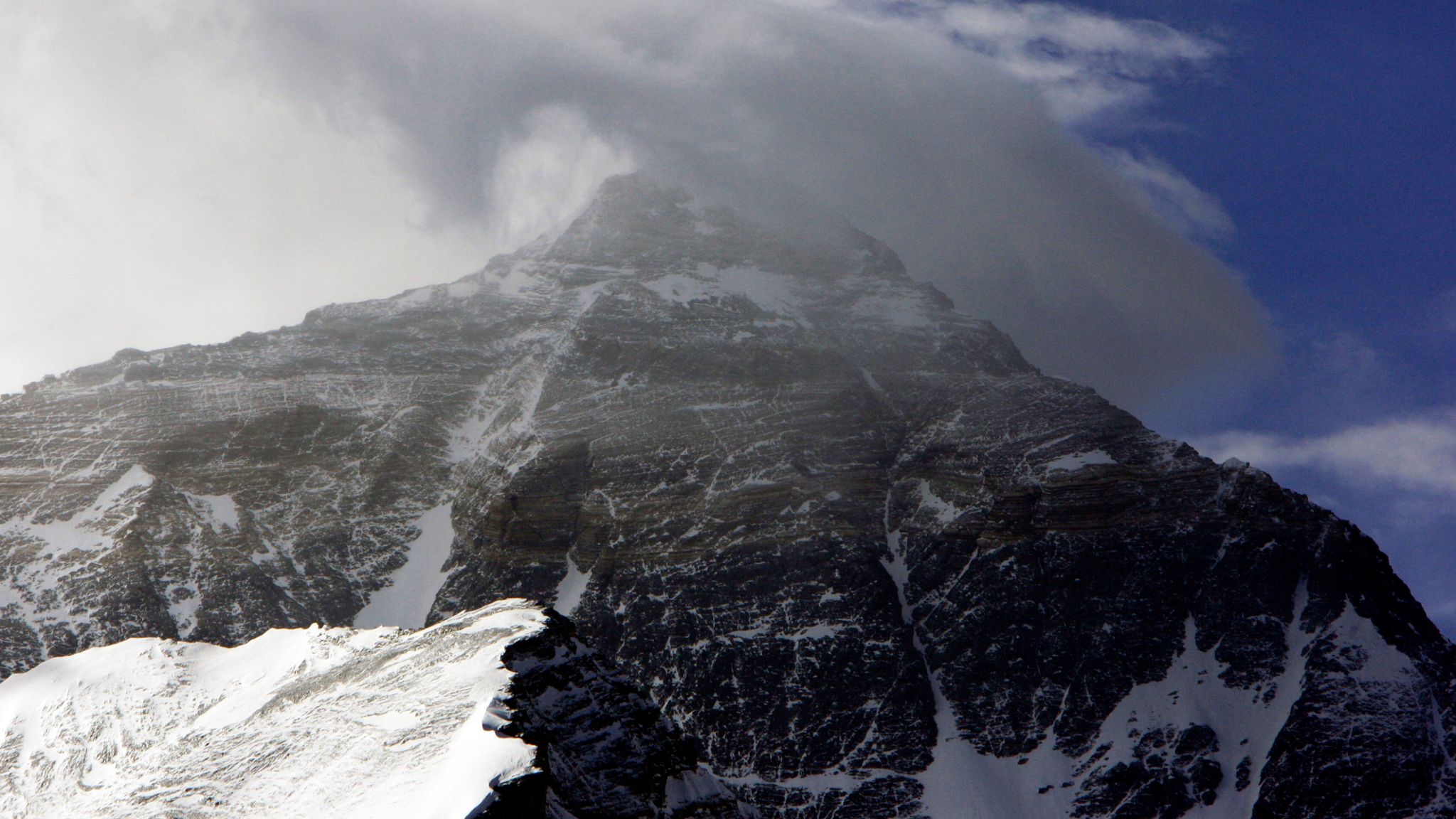Hundreds of climbers are trapped on the eastern slopes of Everest, on the Tibetan side. A powerful snowstorm has hit the mountain, and the situation is getting worse by the minute.
The climbers are trapped at an altitude of more than five kilometers on Everest, and the rescue operation is being conducted in critically low visibility and persistent bad weather.
Most of the climbers are at an altitude of 5,200–5,800 meters, near the Rongbuk Glacier and along the route to North Kol. Communications are no longer working there, and helicopters are unable to take off due to the strong winds. A snowstorm completely blocked access.
Rescuers warn that the weather could become even more severe in 48 hours. This means climbers may be left without a chance of rescue.
- South of Tibet in Nepal, heavy rains have triggered landslides and flash floods that have blocked roads, washed away bridges, and killed at least 47 people since Friday.
- Thirty-five people have died in separate landslides in the eastern Ilam district, which borders India.
- Nine people are missing after being swept away by floodwaters, and three others were killed by lightning strikes in other parts of the country.
What happened on Everest
While the world was going about its business as usual, on the eastern slope of Mount Qomolangma (Everest) A drama unfolded that rocked the mountaineering community. On October 3, a snowstorm of unusual intensity for October lashed the mountain. Meteorologists immediately noted that it was the most severe weather in several years during this period.
The storm led to a catastrophic reduction in visibility—less than one meter. At an altitude of approximately 5,000 meters, where every step requires incredible effort, this spelled the end of freedom of movement. About a thousand people—climbers, guides, and Sherpas—were trapped in the ice.
Base Camp was paralyzed, and huge yaks were stuck in snowdrifts.
According to the Sanxiang Dushibao newspaper, which was the original source of the alarming news, the situation is critical. “According to incomplete statistics, around a thousand people could have been trapped along the entire route. Some managed to descend on their own, but most require assistance,” the publication reports.
The descent routes turned into icy chutes. The roads became so icy that leaving the base camp, located at 4,900 meters, became impossible. The elements spared no one: a thick blanket of snow completely covered the tents, hiding them beneath a thick layer of snow.
The scale of the disaster is underscored by the fact that even yaks—hardy animals used for centuries to carry loads in the Himalayas—were helplessly stuck in the deep snowdrifts.
Operation Rescue: A Battle with the Elements and Time
Authorities responded swiftly: the Everest Landscape Park was closed, ticket sales were suspended, and all potential tourists were urged to cancel their trips. Professional rescue teams, guides, and volunteers from nearby villages immediately rushed to the mountain, ready to help clear the rubble.
However, the situation quickly worsened. The storm caused severe communication disruptions, making coordination of efforts nearly impossible. The first reliable contact with the climbers was established only early in the morning of October 5th. It was then that the first confirmations came from the ice trap: about a thousand climbers, some in critical condition.
The main problem for rescuers was the inability to use aircraft. Helicopters are unable to reach the disaster area due to gale-force winds and zero visibility. And according to meteorologists, the weather could worsen even further in the next two days.
Risk zone: altitude, cold, and mountain sickness
According to the latest information, the majority of the trapped climbers are in camps 15-25 km northeast of the summit, at altitudes between 5,200 and 5,800 meters. This area, adjacent to the Rongbuk Glacier, is known for its harsh weather.

Despite incredible difficulties, the rescue operation is beginning to show initial success. According to Reuters, rescuers have managed to reach some of the victims. About 350 people have already been safely evacuated to the settlement of Kudang. Contact has been established with another two hundred trapped climbers.
The action plan is clear, but its implementation requires time and titanic effort: everyone still on the slopes is planned to be escorted to Kudang, group by group, by rescue teams dispatched by the local government.
A holiday in China that turned into a tragedy
The reason for such a large crowd in the remote Karma Valley, leading to the eastern slope, was the extended national holidays in China. Taking advantage of the weekend, hundreds of tourists and climbers rushed to the foot of the “roof of the world,” unaware that their celebratory climb would turn into a struggle for survival.
“Seven bodies have already been recovered from the rubble. We have information about two more people. “Efforts are underway to recover their bodies,” Abhishek Roy, a police spokesman for Darjeeling district, said on Sunday, according to Indian news agency ANI.
Several highways were blocked by landslides and washed away by floods, leaving hundreds of passengers stranded, authorities said.
“Domestic flights have been largely disrupted, but international flights are operating normally,” said Rinji Sherpa, a spokesman for Kathmandu Airport, Nepal’s largest international gateway.
In southeastern Nepal, the Koshi River, which causes deadly floods in the eastern Indian state of Bihar almost every year, is flowing above its danger level, a district official said.
Dharmendra Kumar Mishra, district governor of Sunsari district, said all 56 sluice gates Koshi gates were opened to drain water, compared to about 10-12 normally, adding that authorities had banned vehicle traffic on the bridge.
In Kathmandu, several rivers flooded roads and inundated many homes, cutting the capital off from the rest of the country by road.
Hundreds of people die each year as a result of landslides and flash floods, which are common mainly in mountainous Nepal during the monsoon season, which typically begins in mid-June and lasts until mid-September.
Meteorologists said rains were likely to hit Himalayan provinces until Monday, and authorities said they were taking “maximum precautions” to help people affected by the disaster.
Material prepared by: alp.org.ua


